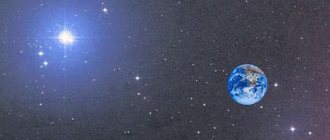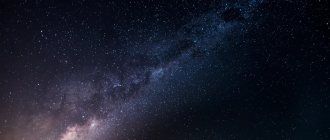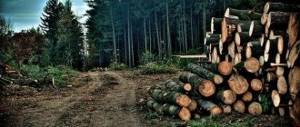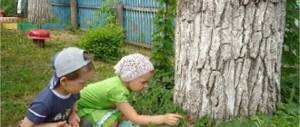Solar planets The world around us
Planets of the solar system Message on the world around us, grade 2
In the night sky you can often see luminaries that at first glance look like stars, but they shine with an even light even when real stars twinkle strongly. If you carefully follow such a star for several evenings, you will notice that it is slowly moving among the stars. These “wandering” luminaries are the planets.
Planets are cold celestial bodies. They, like our Earth, move around the Sun.
The sun illuminates the planets and that is why we see them.
Planets of the solar system There are only 9 of them
Mercury, Venus, Earth, Mars, Jupiter, Saturn, Uranus, Neptune, Pluto.
Recently, scientists have excluded Pluto from this list. Now there are eight planets.
The planet Venus is brighter than all the stars. She was named after the Roman goddess of beauty. Venus is visible in the west in the evening or in the east in the early morning. Through a telescope it is visible completely white, without spots. But this is not the planet itself, but the clouds that surround it in a continuous layer. There are poisonous gases in the air of Venus. You can't breathe with them. When the Sun illuminates Venus from the side, only half of it is visible.
Our second neighbor, Mars, appears as a red star in the sky. For this he received the name of the ancient Roman god of war. The reddish color is the color of the Martian deserts. The deserts are crossed by stripes. Some scientists previously thought that these stripes were canals and vegetation along the banks of the canals. It is now clear that there are no canals on Mars. There is little air on Mars, and it is also unsuitable for breathing.
Our Earth is the 3rd planet from the Sun, it is located between Mars and Venus. Earth is different from all neighboring planets: it has oceans and a breathable atmosphere. That's why life arose here.
Mercury is the closest planet to the Sun and the smallest planet; it has no satellites and a very thin atmosphere.
Jupiter is the largest planet - a giant planet. Jupiter is composed primarily of helium and hydrogen. Its moon, Ganymede, is larger than Mercury, and Jupiter has 65 moons in total.
Saturn differs from other planets in that it has rings consisting of particles of ice and dust. It has the lowest density of all the planets (almost like water).
Uranus is the coldest planet, and it also rotates “lying on its side.”
Neptune is the planet farthest from the sun and has the strongest winds.
Pluto was once considered a dwarf planet, but is now considered a celestial body. It is smaller in size than the Moon.
Related posts:
- Planet Uranus School report on the topic Planets Planet Uranus School report on the topic Planets The world around us...
- Planet Earth Report 3rd grade The world around us Planet Earth report 3rd grade The world around us…
- Mars Report on the topic Planets of the solar system Mars Report on the topic Planets of the solar system The world around us 2…
- Mercury is the smallest planet Mercury is the smallest planet. The world around us 3rd grade….
- Inhabitants of the garden Report The world around us 2nd grade Inhabitants of the garden Report. The world. 2nd grade...
Lesson No. 2. “Planets of the solar system”
Film manual for lesson development “The World Around us” 4th grade
Lesson type:
combined
Target
— formation of a holistic picture of the world and awareness of man’s place in it based on the unity of rational-scientific knowledge and the child’s emotional and value-based understanding of his personal experience of communicating with people and nature;
Characteristics of student activities
Understand
educational objectives of the lesson, strive to fulfill them.
Based on the structure diagram of the Solar system, characterize
the planets,
list
them in order of increasing and decreasing sizes, and
carry out
self-test.
Distinguish between
planets and their satellites.
Work in pairs: analyze
patterns of the Earth’s rotation around its axis and revolution around the Sun.
Establish
cause and effect relationships between the movements of the Earth and the change of day and night, the change of seasons.
Formulate
conclusions from the material studied,
answer
final questions and
evaluate
achievements in the lesson.
Planned results
Subject (know, be able to)
Know
the name of our planet, the planets of the solar system.
Understand
the general conditions necessary for living organisms to live.
Be able
to work with ready-made models (globe and map), create simple models of planets
Meta-subject ( Regulatory. Cognitive. Communicative)
P. – establish cause-and-effect relationships in the range of phenomena being studied.
R. – plan your actions in accordance with the task. Learn to make your own assumptions based on textbook illustrations.
K. – formulate one’s own opinion and position.
Personal results
The motivational basis of educational activities, including educational and cognitive motives.
Basic concepts and definitions
Planets of the Solar System:
Mercury, Venus, Earth, Mars, Jupiter, Saturn, Uranus, Neptune. The Earth has one natural satellite - the Moon.
Preparing to learn new material
Look at the diagram on p. 5. What can you tell about the planets of the solar system? Using the diagram, list the planets: a) in order of increasing size; b) in order of decreasing size. Test yourself on the “Self-Test Pages”.
Learning new material
LET'S GET TO KNOW THE PLANETS
Most planets can be seen from Earth with the naked eye. They look like bright stars. But we must remember that planets, unlike stars, do not emit their own light. They only reflect the light of the Sun.
Earth is a relatively small planet. Its diameter is 12,740 km.
Earth Mars
The largest planet is Jupiter. The diameter of Jupiter is 11 times the diameter of the Earth, and its mass is 318 times the mass of our planet. And here’s another interesting thing: Jupiter is two and a half times heavier than all the other planets combined!
Jupiter Saturn
The smallest planet is Mercury
. Its diameter is 4,880 km
Most planets have natural satellites. These are also cosmic bodies of the Solar System. The Earth has one satellite - the Moon, Mars has two, and Saturn has more than 60. In addition, Saturn has rings that are clearly visible through a telescope. They appear solid, but in fact they consist of a huge number of rocks and blocks that move around Saturn. Similar rings, only much less noticeable, have been found on Jupiter, Uranus and Neptune.
Scientists from Russia and other countries study planets and their satellites using powerful telescopes and automatic interplanetary stations. Such stations have already visited the Moon, Venus and Mars, and they photographed many planets at close range. In 1959, the automatic interplanetary station Luna-2, created in our country, was the first in the world to reach the surface of the Moon. Also in 1959, the Soviet station Luna-3 photographed for the first time the far side of the Moon, invisible from Earth. Ten years later, in 1969, man first set foot on the Moon. It was American astronaut Neil Armstrong.
The exploration of the Moon was continued by Soviet self-propelled vehicles - “Lunokhods”, controlled from the Earth. The first of them (Lunokhod-1) was delivered to the lunar surface in 1970, the second (Lunokhod-2) - in 1973. And these are just some pages of the history of space exploration.
Automatic Self-propelled vehicle interplanetary station "Lunokhod-1"
"Luna-2"
WHY DO DAY AND NIGHT AND SEASONS CHANGE ON EARTH?
Analyze the diagrams. With their help, try to explain the causes of the following natural phenomena: a) the change of day and night; b) change of seasons. Test yourself using the text of the textbook
the change of night and day
Change of seasons
Phenomena that are well known to us - the change of day and night, the change of seasons - are associated with the movement of the Earth in outer space.
The earth constantly rotates around an imaginary line - the earth's axis. This line is mentally drawn through the thickness of the Earth between the North and South Poles. The Earth rotates from west to east. It completes a full rotation around its axis in 24 hours.
Because of this rotation, the cycle of day and night occurs. On the side of the Earth that is illuminated by the Sun, it is day. On the opposite side, in the shadows, it is night.
At the same time, the Earth moves around the Sun. The time it takes for the Earth to completely rotate around the Sun is one year.
The diagram clearly shows that the earth's axis is inclined. This is exactly the position the Earth occupies in outer space.
Due to the tilt of its axis, our planet, moving around the Sun, seems to expose its northern part to it, then its southern one. That's why the seasons change. When the northern part of the Earth receives more light and heat from the Sun, it is summer, and in the southern part it is winter at that time. And vice versa
Comprehension and understanding of acquired knowledge
Practical work
1. Find the main sides of the horizon on the globe; North Pole; South Pole. Use a globe to show how the Earth rotates around its axis.
2. Let some light source, for example a lamp, represent the Sun. Place a globe in front of it. Rotate the globe around its axis and watch how light and shadow move across its surface. Try to imagine how the change of day and night occurs on Earth.
3.Using the same light source and globe, show how the Earth revolves around the Sun. Explain why the seasons change.
Let's discuss!
The temperature on Mercury reaches +480°, on Mars it rarely rises above 0°, on Jupiter the temperature is close to -130°, and on Saturn it approaches -170°. How do you explain this?
Independent application of knowledge
check yourself
1.Name the planets according to the diagram on this page. For self-test, use the diagram on p. 5.
2. Briefly tell us about the planets of the solar system. 3. How does the Earth move in outer space? 4. Explain why the change of day and night occurs on Earth. 5. Why do seasons change on our planet?
Conclusion
The Solar System includes the planets Mercury, Venus, Earth, Mars, Jupiter, Saturn, Uranus, and Neptune. The Earth has one natural satellite - the Moon. Natural phenomena such as the change of day and night and the change of seasons are associated with the movement of the Earth in outer space.
Homework assignments
1.Make models of planets from plasticine. Show that all the planets have a spherical shape, but different sizes.
2. Observe the Moon in the evening sky: with the naked eye, through binoculars or a school telescope. Compare the results of observations made in different ways.
3.If possible, visit the planetarium. Here you can see the movement of the planets of the solar system, get acquainted with the variety of planets and their satellites. Get ready to talk about your impressions in class.
4. Try to find information about new scientific research on the planets of the solar system in additional literature and the Internet. Prepare a message.
Traveling through the solar system
Educational video about the planets of the solar system,
Structure
of the solar system
SOLAR SYSTEM - INTERESTING FACTS
Rotation of the Earth around
the Sun.
Rotation of the earth around its axis and around the sun presentation
Change of
day and night Earth : change of day and night
Sources of information
:
SCHOOL OF RUSSIA
Federal State Educational Standard A. A. Pleshakov textbook, E. A. Kryuchkova workbook The world around us, grade 4 Moscow “Enlightenment” 2014
YouTube
website : https://www.youtube.com/
Hosting of presentations
around the world
https://ppt4web.ru/nachalnaja-shkola/prezentacija-k-uroku-okruzhajushhego-mira-vo-klasse-chto-takoe-ehkonomika.html






